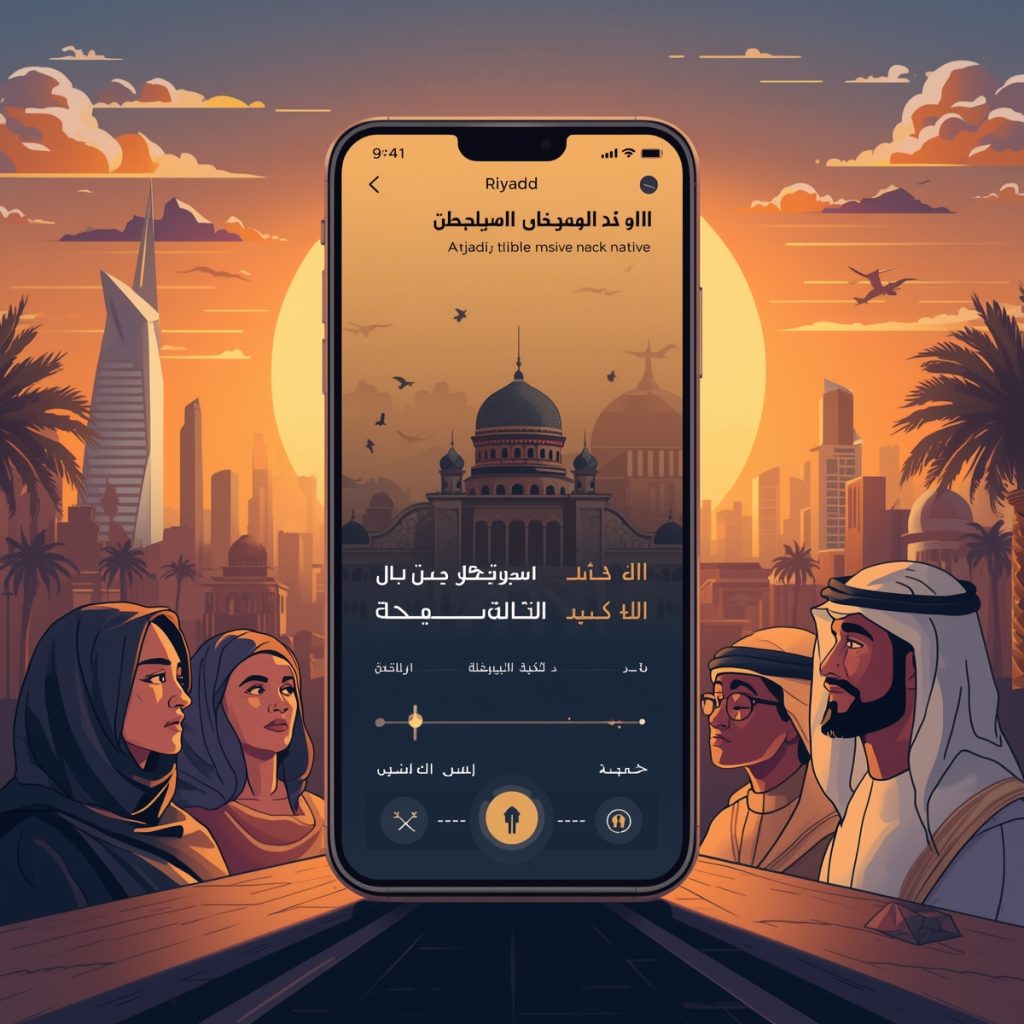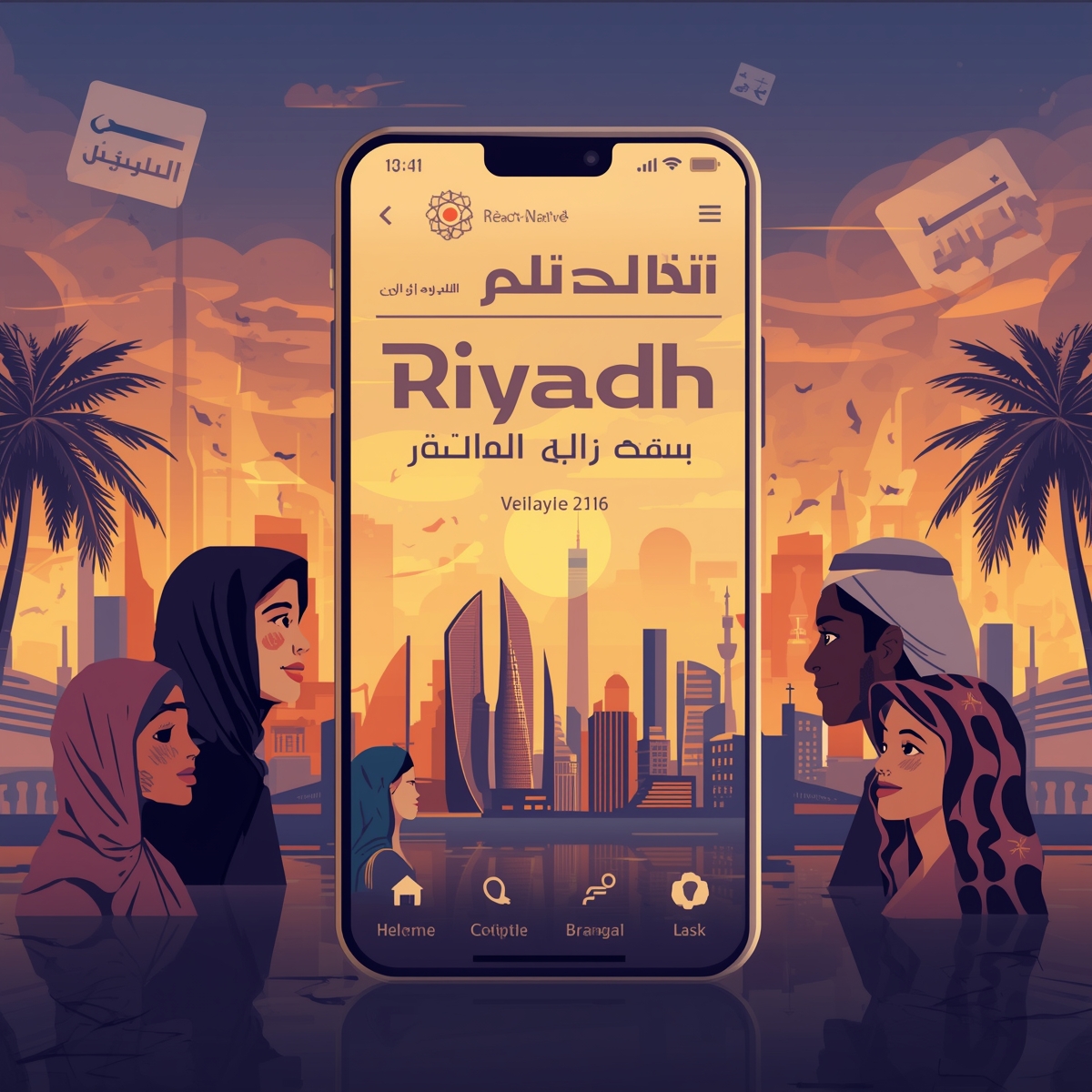What Are the Top React Native Mobile App Trends Shaping Riyadh’s Tech Market in 2025?
The tech momentum in Riyadh is undeniable. With Saudi Arabia’s digital economy accelerating
toward Vision 2030, founders and product teams are aligning on one pragmatic choice for rapid,
high-quality releases: React Native. In 2025, the framework’s ecosystem is maturing fast,
enabling businesses to ship polished iOS and Android experiences from a shared
codebase—without sacrificing performance, security, or brand polish.
Below are the top React Native trends shaping how Riyadh startups and enterprises design,
build, and scale mobile apps this year—plus brief, practical tips to act on each trend.
1) Fabric, TurboModules, and Hermes Go Mainstream
React Native’s modern architecture—Fabric for rendering, TurboModules for native bridges,
and Hermes for a lightweight JavaScript engine—has moved from “nice to try” to “must have.”
Together, these upgrades deliver quicker startup times, smoother animations, and lower
memory usage—crucial for users in Riyadh who expect premium speed on mid-range and
flagship devices alike.
Action tip: Enable Hermes by default, migrate critical native modules to TurboModules, and
test UI transitions under Fabric to confirm fluid, 60-fps interactions.
2) AI-Powered Personalization and On-Device ML
Businesses in Riyadh are weaving AI into React Native apps for recommendations, chat
support, anomaly detection, and predictive UX. Lightweight, on-device models reduce latency
and protect user data while keeping interactions snappy—even with spotty connectivity.
Action tip: Start with event pipelines (analytics + consent), then add model-driven features
where they clearly lift KPIs (e.g., “Next Best Offer” in e-commerce or ETA accuracy in logistics).
3) Offline-First UX and Conflict-Free Sync
From retail field ops to delivery apps, teams in Riyadh are embracing offline-first
patterns—caching, optimistic UI, and background sync—to keep flows functional without a
constant network. Modern sync engines and CRDT-style strategies prevent hard-to-debug data
conflicts.
Action tip: Define per-screen network states (online, slow, offline). Cache the “next best action”
and show progress indicators that gracefully reconcile when connectivity returns.
4) Super-App Containers and Mini-App Strategy
Large players are adopting a super-app approach—housing multiple micro-features (rides,
payments, rewards, bookings) under one React Native shell. Startups mirror the pattern at a
smaller scale to accelerate feature launches while keeping teams autonomous.
Action tip: Organize features as independently versioned packages. Use deep links and in-app
modules to ship new “mini-apps” without bloating the core bundle.
5) Payments, Fintech Readiness, and Compliance-First Design
Fintech and commerce remain red-hot in Riyadh. Teams are standardizing payment layers with
secure SDKs, tokenization, and robust error-handling patterns that feel native to iOS and
Android. Compliance and auditability are built in from day one.
Action tip: Centralize payments behind a single abstraction. Instrument retries, receipts, and
clear user messaging for every edge case (timeouts, 3-D Secure, canceled flows).
6) Arabic-First Localization and True RTL Polish
Beyond simple translations, 2025 apps deliver Arabic-first UX: RTL layout parity, localized
number/date formatting, and typography tuned for readability. High-touch teams prototype
Arabic screens first to ensure parity with English designs.
Action tip: Automate RTL snapshot testing. Validate mirrored icons, carousels, and gestures;
ensure mixed-direction content (Arabic + English) renders cleanly in forms and chat.
7) Secure by Default: Device Trust, Biometrics, and Data Minimization
Security is now a product feature. React Native apps in Riyadh apply device attestation,
biometric auth, encrypted stores, and careful permission prompts. “Collect less” is the new north
star for user trust and lean compliance.
Action tip: Threat-model your flows. Encrypt sensitive fields at rest, prefer OS-level biometrics,
and design clear, localized consent screens linked to granular controls.
8) Observability: Real-Time Telemetry, Crash Analytics, and A/B Velocity
To meet ambitious growth targets, teams rely on actionable observability—not just logs. Real-
time crash traces, performance baselines by device, and in-app A/B testing enable faster, data-
driven iterations across iOS and Android.
Action tip: Track Core Web Vitals-like metrics for mobile (TTI, cold start, interaction latency).
Tie experiment outcomes to revenue or retention—not just click rates.
9) Design Systems and Token-Driven Theming
Consistent, brand-authentic UI is table stakes in Riyadh. Tokenized design systems (colors,
spacing, typography) sync product, design, and engineering. With React Native, tokens
propagate to components, enabling instant, safe theming changes and dark mode.
Action tip: Adopt a token source of truth and auto-generate platform artifacts (TypeScript types,
style sheets) to avoid drift between design and code.
10) Multiplatform Ambitions: Mobile First, but Web and Desktop Ready
While mobile remains primary, many Riyadh companies plan companion experiences via React
Native Web and desktop wrappers for ops teams. Shared business logic reduces maintenance
while tailoring UI per surface.
Action tip: Separate domain logic from view code. Keep navigation and gestures platform-
aware to avoid “one-size-fits-none” UX.
11) Green Performance: Battery, Bundle Size, and Network Hygiene
Energy-aware apps win loyalty. Teams aggressively trim bundle size, lazy-load routes,
compress media, and cut unnecessary network calls—critical in hot climates where battery life
matters.
Action tip: Gate heavy features behind interaction; prefetch only what drives the next screen.
Measure battery impact during routine user journeys.
12) CI/CD Maturity and Store-Ready Releases
Release trains, automated screenshots, metadata pipelines, and staged rollouts are standard
practice in Riyadh for dependable delivery. Teams ship small, frequent updates with
confidence.
Where Expert Partners Fit In
Selecting the right implementation partner often determines whether these trends translate into
results. A seasoned React Native app development company in Riyadh can shorten
discovery, avoid costly re-writes, and embed the practices above from sprint one.
If you want a partner that blends market insight with engineering depth, Five Programmers
brings structured discovery, token-driven design systems, and an execution model tuned for
Saudi timelines. From MVPs to scale-ups, their teams focus on performance, localization, and
measurable ROI.
For organizations prioritizing platform longevity and governance, Five Programmers also
establish design ops, accessibility checklists, and telemetry baselines so product decisions stay
data-led as you grow.
Quick Checklist for 2025 React Native Success in Riyadh

- Enable Hermes, Fabric, and TurboModules by default
- Prototype in Arabic/RTL first to ensure true parity
- Make offline-first a core requirement, not an add-on
- Centralize payments and localize error flows
- Track performance and experiment continuously
- Use design tokens to scale brand-consistent UI
- Keep releases small, frequent, and automated
FAQs: React Native in Riyadh (2025)
1) Is React Native ready for high-performance apps in Saudi Arabia?
Yes. With Hermes, Fabric, and careful native module choices, React Native delivers near-
native performance suitable for commerce, fintech, and logistics at Riyadh scale.
2) How do we ensure flawless Arabic and RTL experiences?
Design Arabic first, automate RTL snapshots, and audit mirrored navigation, icons, and
gestures. Validate mixed-direction content in chat, forms, and order details.
3) What’s the fastest path to MVP without future rework?
Adopt modern architecture, tokenized design, and offline-first from day one. Ship a thin
vertical slice with observability to learn quickly and extend safely.
4) Can we share code with web or desktop later?
Yes. By isolating domain logic and using platform-aware views, you can extend to React
Native Web or desktop shells with minimal duplication.
Conclusion: 2025 Belongs to Riyadh’s React Native Builders
The message is clear: React Native lets Riyadh companies ship faster, localize better, and
scale with confidence. Teams that adopt the trends above—modern architecture, AI
personalization, offline resilience, airtight security, and tokenized design—will move from
releases to results far more quickly.
Ready to turn these trends into a revenue-driving mobile roadmap?
� Contact Us or Get a Free Quote Today!

